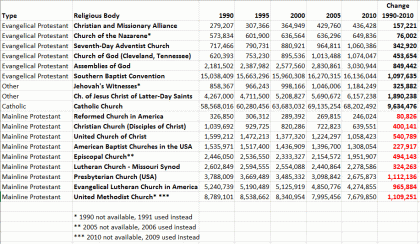In the history of the human species, few ideas come more naturally to us than the belief that everything is going to hell in a handbasket. Along with pastors, politicians, and social scientists, funeral directors can be heard observing that the world seems to be losing its religion, and that this is probably a bad thing.
Nothing shows the present ruin more vividly than the light of a sacred past.
Perhaps it is ominous, then, that one of the fastest-growing and largest religious segments in the United States today is the group known as the “Nones,” who comprised 2 percent of the population in the 1950s but now make up between 20 and 25 percent, depending on the survey.
The Nones are defined in the American Religious Identification Survey (ARIS) of 2008 as a “nonreligious, irreligious and anti-religious bloc” who answered the identification question with “None” or “No Religion”. Survey respondents could fall into any of the following categories: “None, No religion, Humanistic, Ethical Culture, Agnostic, Atheist, Secular.”1
Exact percentages of Nones within the U.S. population have varied, but the trend has been similar among all surveys of American religion. Because the Gallup organization has the longest record of tallying such information, I’ve used Gallup results for the past 70 years to create the following graph:2
The data raise interesting historical questions, such as what occurred in America in the 1950s to cause such a return to religion, and then what happened in the 25 years after 1992 to cause such a falling off.
For my purposes, the more relevant questions have to do the “Nones” themselves, including what they believe, and what kind of changes they might signal, or even cause, in American funeral practices.
Even more important, both for people who may be buying funerals and those who may be selling them, is the bigger question of what exactly is the relationship between religion—or lack thereof—and funerals. The Nones give us a useful angle for exploring such questions because they will eventually have a direct influence on American funerals when they make the purchases.
Answering these questions will require a series of posts, beginning here, with a brief look at who the Nones are, and where they really are on the “religious” spectrum.
Continue reading The “Nones”: When No Religion Is The New Religion



